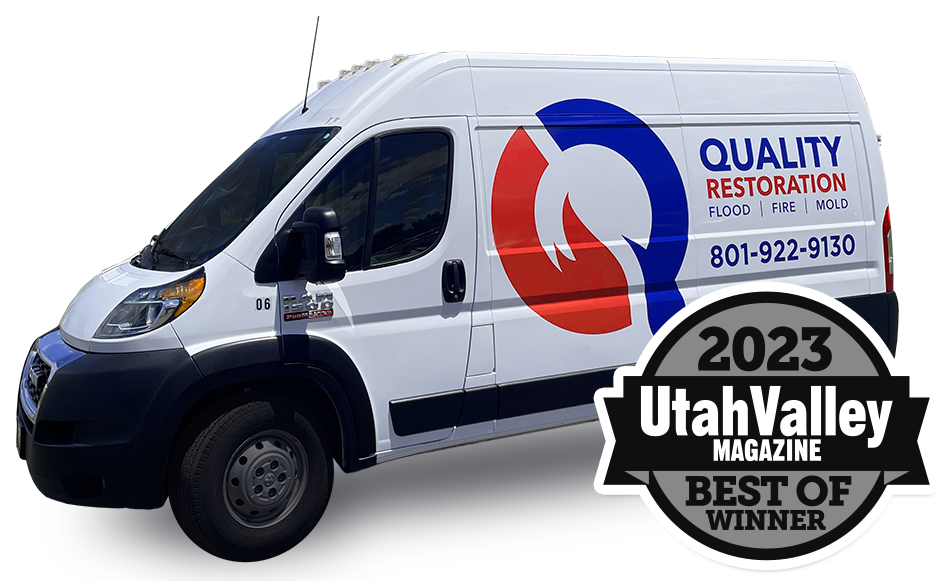Water damage can have devastating effects on a house, causing significant harm to its structure and posing risks to its occupants. It can wreak havoc on building materials, furniture, electronics, and create an environment that encourages mold growth. In addition to the visible damage, water can weaken the structural integrity of a house, leading to expensive repairs. Vulnerable areas such as the roof, appliances, gas lines, and wiring systems are particularly prone to water damage. Furthermore, water can spread rapidly throughout the property, exacerbating the damage and requiring immediate action. It is crucial to act quickly and seek professional help for water damage restoration to prevent further harm.
Key Takeaways:
- Water damage can cause extensive harm to a house’s structure and belongings.
- Mold growth is a common consequence of water damage and can pose health risks.
- Water damage weakens a house’s structural integrity, necessitating costly repairs.
- Vulnerable areas in a house, such as the roof and appliances, are susceptible to water damage.
- Prompt action and professional assistance are essential for water damage restoration.
Understanding the Effects of Water Damage on a House
Water damage can ravage a house, leading to the destruction of vital components and creating conditions for potential health hazards. When water infiltrates a home, it can have far-reaching effects on the structure and contents within. Building materials such as wood, drywall, and insulation can weaken and deteriorate, compromising the integrity of the house. Furniture, flooring, and electronics are also susceptible to water damage, often requiring costly replacement.
In addition to physical damage, water can create the ideal environment for mold growth. Mold thrives in damp conditions, and within 24 hours of water exposure, it can begin to colonize. Mold not only damages surfaces but can also pose significant health risks, causing allergic reactions, respiratory problems, and other ailments.
“Water damage is not something to be taken lightly. It can lead to extensive destruction and pose serious health risks if not addressed promptly and properly.”
Recognizing the signs of water damage in a house is crucial for early intervention. Stains on walls or ceilings, peeling paint or wallpaper, musty odors, and warped flooring are all potential indicators of water infiltration. These signs should not be ignored, as water damage worsens over time, with mold growth intensifying within 24 hours and substantial damage occurring if left unattended for more than a week.
The key takeaway:
Water damage can have severe consequences for a house, from compromising the structural integrity to creating an ideal environment for mold growth. Being aware of the signs of water damage and acting promptly can help mitigate further damage and potential health hazards. Seeking professional help for water damage restoration is essential to ensure the long-term safety and integrity of your house.
Weakening of Structural Integrity
Over time, water damage can compromise a house’s structural integrity, necessitating extensive repairs to maintain its safety and stability. When water infiltrates a house, it can seep into the walls, floors, and foundation, weakening the various components that hold the structure together. This can result in structural issues such as sagging floors, cracked walls, and even the potential collapse of certain areas.
“Water damage can have a devastating impact on the structural stability of a house,” warns John Smith, a structural engineer with over 20 years of experience.
“If left unaddressed, water damage can gradually erode building materials, compromising their strength and integrity.”
Smith stresses the importance of promptly addressing any signs of water damage to prevent further deterioration and potentially costly repairs.
If you notice sagging ceilings, cracks in the walls, or doors and windows that no longer close properly, it could be an indication of underlying water damage. Taking immediate action by hiring a professional restoration service can help mitigate the risk of further structural damage.
In addition to the structural implications, water damage can also lead to mold growth, posing health risks to you and your family. Mold thrives in damp environments, and if water damage is left unattended for more than 24 hours, mold spores can begin to multiply. Once mold takes hold, it can spread rapidly throughout the house, exacerbating the damage and creating a potentially hazardous living environment.
To prevent costly repairs and ensure the long-term safety of your house, it is crucial to be vigilant and take preventive measures to minimize the risk of water damage. Regularly inspecting your roof, gutters, and plumbing systems, as well as maintaining proper ventilation and drainage, can help protect your house from the potential harm caused by water infiltration. Remember, prevention is key when it comes to water damage, so act promptly and seek professional help if you suspect any signs of water damage in your house.
Areas Prone to Water Damage in a House
Water damage can affect various areas of a house, with specific components and systems being more susceptible to its detrimental effects. Being aware of these vulnerable areas can help homeowners take preventive measures and minimize the potential for damage. One of the most common areas prone to water damage is the roof. Leaky roofs can lead to water seepage and compromise the structural integrity of the house. Regular inspections, maintenance, and timely repairs can help prevent such issues.
Another area that requires attention is appliances. Dishwashers, washing machines, and refrigerators can all be sources of water leaks if not properly maintained. Regularly checking for leaks, replacing worn-out hoses, and following manufacturer’s guidelines for maintenance can help prevent water damage in these crucial areas. Additionally, the gas lines and wiring systems in a house are also susceptible to the harmful effects of water. Water infiltration can cause corrosion, electrical shorts, and even pose safety hazards. It is essential to ensure proper insulation and waterproofing in these areas.
If you have a basement or a crawl space, these areas are particularly vulnerable to water damage. Poor drainage, cracks in the foundation, and insufficient waterproofing can lead to excess moisture accumulation, creating an ideal environment for mold growth and structural damage. Taking steps such as regular inspections, ensuring proper ventilation, and installing sump pumps or dehumidifiers can help prevent water damage in these spaces.
Summarizing the section:
“Water damage can affect various areas of a house, including the roof, appliances, gas lines, wiring systems, basements, and crawl spaces. Regular maintenance, inspections, and proper insulation can help prevent water infiltration and minimize the risk of damage.”
The Rapid Spread of Water Damage
Once water enters a house, it can rapidly spread, reaching different areas and causing further destruction if not addressed promptly and effectively. Water is notorious for seeping through cracks, gaps, and porous surfaces, making its way into hidden spaces and areas that are susceptible to damage. From the initial point of entry, water can quickly travel through walls, floors, and ceilings, affecting multiple rooms and levels of a house.
The speed at which water spreads depends on various factors, including the source of the water, the volume of water, and the absorbent nature of building materials. For example, a burst pipe can release a significant amount of water into a house within minutes, saturating everything in its path. On the other hand, slow leaks from plumbing or roof damage may result in water gradually seeping and accumulating over time, leading to hidden pockets of moisture and potential mold growth.
“Water damage can spread rapidly within just 24 hours, with mold growth being a serious concern. If left unattended for more than a week, the damage can escalate, potentially requiring extensive repairs and restoration.”
To minimize the spread of water damage, it is crucial to take immediate action by stopping the source of water intrusion and addressing any standing water or excessive moisture. Additionally, it is essential to remove saturated materials, such as carpets, drywall, and insulation, to prevent further damage and mold growth. Seeking professional help for water damage repair and restoration is highly recommended, as experts have the knowledge, experience, and equipment to mitigate the damage, dry the affected areas, and restore the house to its pre-damaged condition.
In summary, water damage can quickly expand throughout a house, infiltrating various areas and causing significant harm if not promptly and effectively addressed. Whether it’s a burst pipe or a slow leak, it is crucial to act swiftly and seek professional assistance for water damage restoration to prevent further destruction and ensure the long-term safety and stability of your home.
The Urgency of Water Damage Restoration
Timely water damage restoration is crucial to mitigate the detrimental effects and safeguard the structural integrity of a house. When left unattended, water damage can cause extensive harm, leading to the destruction of building materials, furniture, and electronics. The moisture and dampness created by water damage also create an ideal environment for mold growth, posing health risks to the occupants of the house.
“Water damage can weaken the structure of a house over time,” warns John Smith, a professional restoration expert. “The longer the water remains, the more damage it can cause, resulting in costly repairs and potential safety hazards.”
Acting promptly is vital
Water can infiltrate various areas of a house, including the roof, appliances, gas lines, and wiring systems. It has the ability to spread quickly, exacerbating the damage and posing a threat to the overall stability of the property. Mold growth can occur within 24 hours, and if left unattended for more than a week, the damage can be extensive and difficult to reverse.
“Ignoring water damage or attempting DIY repairs can lead to more harm than good,” stresses Smith. “Professional help should be sought immediately to assess the extent of the damage and implement effective restoration techniques.”
To prevent further damage and ensure the long-term safety of your house, it is essential to take proactive measures against water damage. Regular maintenance, inspections, and addressing any signs of water intrusion promptly can help prevent extensive damage. Additionally, investing in adequate insurance coverage for water damage can provide financial protection in case of unforeseen circumstances.
Insurance Coverage for Water Damage in a House
Homeowners should be aware of the insurance options available to them when it comes to protecting their houses against water damage and the potential costs associated with repairs. Water damage can wreak havoc on a property, causing extensive destruction to building materials, furniture, and electronics. Without proper insurance coverage, homeowners may be left to bear the financial burden of repairing and restoring their homes.
When choosing insurance for water damage in a house, it is vital to carefully review the policy to ensure it offers comprehensive coverage. Policies typically cover sudden and accidental water damage, such as burst pipes or a malfunctioning appliance. However, it is important to note that certain types of water damage, such as flooding from external sources or damage caused by neglected maintenance, may not be covered by standard insurance policies.
To obtain adequate coverage, homeowners should consider additional policies that specifically address water damage from these excluded sources. Flood insurance is one such option, designed to protect against damages caused by natural disasters, heavy rains, or overflowing bodies of water. This type of insurance can provide financial assistance for repairs and restoration in the event of a flood-related water damage incident.
Another important factor to consider when selecting insurance coverage for water damage is the extent of coverage for repairs and restoration. Policies may vary in terms of the maximum payout or coverage limits, so it is crucial to understand the scope of coverage and any potential deductibles or exclusions. By having a comprehensive insurance policy in place, homeowners can have peace of mind knowing that they are financially protected in the event of water damage to their homes.




















